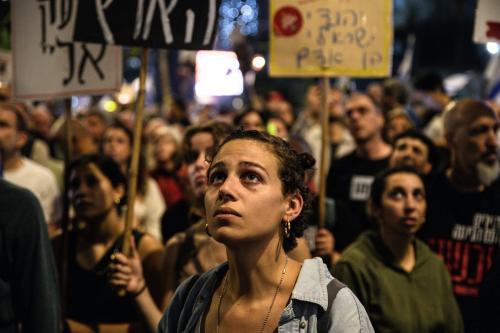In less than a week, representatives from Iran and the P5+1 (Britain, China, France, Russia, the U.S. plus Germany) will convene in Vienna to discuss ways for Iran to give verifiable guarantees of the solely peaceful nature of its nuclear program.
In light of this, the March 9-10 trip to Iran by EU foreign policy representative Catherine Ashton, who represents the P5+1 in the nuclear talks, was generally perceived as a symbolic gesture of goodwill. Besides diplomatic courtesy, however, Ashton’s visit was also a delicate balancing act in the pursuit of various goals.
One objective was to bolster the Iranian public’s support for the nuclear talks. In Iran, President Hassan Rouhani has come in for growing criticism for his decision to negotiate with the P5+1. Ashton’s visit, the first by the EU’s top foreign policy official since 2008, provided Rouhani with some evidence that his approach may work. Tellingly, the Iranian press initially generally welcomed the visit.
A second goal was to emphasize the potential of EU-Iran cooperation on issues of mutual concerns, ranging from the fight against drug trafficking to, possibly, efforts to end Syria’s civil war.
Further, there was the need for Ashton to link improvements in EU-Iran relations with success in the nuclear talks. In carefully worded remarks, Ashton mentioned the recent visits to Tehran of the foreign ministers of EU countries (namely Italy, Belgium, Poland, Sweden, and Spain) with a tradition of ‘historical links’ with Iran. On the surface, Ashton might just have wanted to reinforce the message that Europe’s desire to restore ties with Iran is genuine. Between the lines, however, there was also a subtle warning that individual EU countries have little room to deviate from the P5+1’s dual track approach combining diplomacy with sanctions.
In so doing, Ashton might have had in mind another goal, i.e. re-assuring the U.S. that the overtures towards Iran of some EU countries will not lead to an untimely erosion of Iran’s isolation. Her decision to strike a note of caution about the outcome of the nuclear talks, in strident contrast with Iran’s optimism but in line with U.S. concerns, was an indirect way to show that Iran should not expect much daylight between the EU and the U.S. In a similar fashion, Ashton’s meeting with women activists, much criticized by Iran’s hardliners, was a reminder that the EU remains concerned about more than Iran’s nuclear plans.


Commentary
Catherine Ashton’s Delicate Balancing Act in Tehran
March 12, 2014